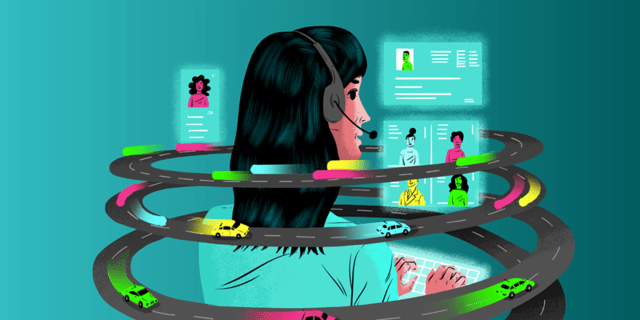As the tax and customs authority for the United Kingdom, Her Majesty’s Revenue & Customs (HMRC) not only supports the local economy through the collection of more than £650 billion in taxes, but also many of the region’s critical public services like the National Health Service.
However, as the organization grew, it knew it needed to evolve its operations.
“HMRC has been around for decades and, as such, we’ve grown at arm’s length and, as many organizations, a lot of our infrastructure is legacy,” explained Sarah McMann, CIO Customer Services, HMRC. “And, to some extent, that has really impacted and debilitated our ambition to make life easy – to make taxation easy – for all our customers and employees.”
For front-line tax advisors, this meant they needed to open around 15 applications just to deal with a simple customer query. Often, they weren’t even provided the same information presented to the customer, which resulted in a poor experience for both the advisor and customer.
HMRC also emphasized its telephone and mail channels for communications, although it knew customers were increasingly expecting digital interactions or for the organization to remove the need for any interaction whatsoever.
A few years ago, the HMRC team decided to review how it was engaging its customers. The organization conducted a six-month review, ingesting data across millions of customer experiences, to get a real idea as to what was driving their customers to engage with them.
“[The data] gave us a real richness in terms of where the pain points were, [and] what opportunities we had to address that and improve the experiences,” McMann said.
It was at that time that HMRC took the first steps in its journey toward autonomous operations. As the name implies, autonomous operations are all about self-optimizing your business by applying AI and automation at scale to decisioning, operations, and servicing across your organization.
The end result? An improved customer experience while increasing efficiency enterprise-wide.
At HMRC, it meant creating a single user interface for tax advisors and removing menial tasks they had to perform via automation – all to support improving the customer and employee experience. Next steps include infusing AI and machine learning capabilities to personalize customer communications to the channel of their choice.
There’s a variety of additional benefits the journey toward autonomous operations can bring organizations. Here are five of them:
1. Aligns your workforce – the most impactful work gets done first.
With autonomous operations, work priority is assessed by AI based on the impact to your strategy. This means AI assigns work to maximize speed and results. Worklists are continuously reassessed – and AI re-orders and re-routes them as needed to optimize the workforce. Dashboards are also used to offer complete visibility into workforce allocation across workflows.
2. Increases productivity – automation is the rule and people are the exception.
As organizations strive toward autonomous operations, simple, repetitive work is automated. Even complex, expert decisions are fully automated or guided by AI. People will only be pulled into workflows for critical customer engagements and truly exceptional circumstances.
3. Improves customer experiences – enables customers with fast, self-service outcomes.
Like McMann explained, HMRC strives to make finding answers easy for customers. With HMRC’s autonomous operations, this is achieved through customer self-service capabilities as well as providing front-line tax advisors with full visibility into customer information in a single, unified view.
4. Manages risks – proactively identifies and quickly remediates risks consistently.
Continuing the path toward autonomous operations, implementing AI assists organizations in consistently managing compliance. Potential risks are automatically identified, and AI makes the best decision to get work back on track. In addition, organizational standards and initiatives – like risk and environmental, social, and governance (ESG) – are operationalized at every transaction.
5. Continuously optimizes – uncover hidden areas of inefficiency and quickly address them.
By combining AI with automation, AI autonomously develops and deploys workflow changes to quickly address inefficiencies. To do this, AI can monitor operations to see how they’re executing against your strategy, and identify and prioritize opportunities and inefficiencies. As a result, your solution can automatically develop application building blocks to address each opportunity.
At HMRC, the journey toward autonomous operations continues. As McMann explained, the road to autonomous looks different everywhere because all organizations can start some place different.
“I think there has been a misconception that having legacy and backend infrastructure means that you can’t improve the customer and employee experience,” she said. “But with Platform-as-a-Service and Software-as-a-Service, we’ve been able to evidence really quickly upfront that you can make fundamental, significant changes to that in record speed by using some of this technology.”
Are you curious about the road to autonomous? Discover more at pega.com.

